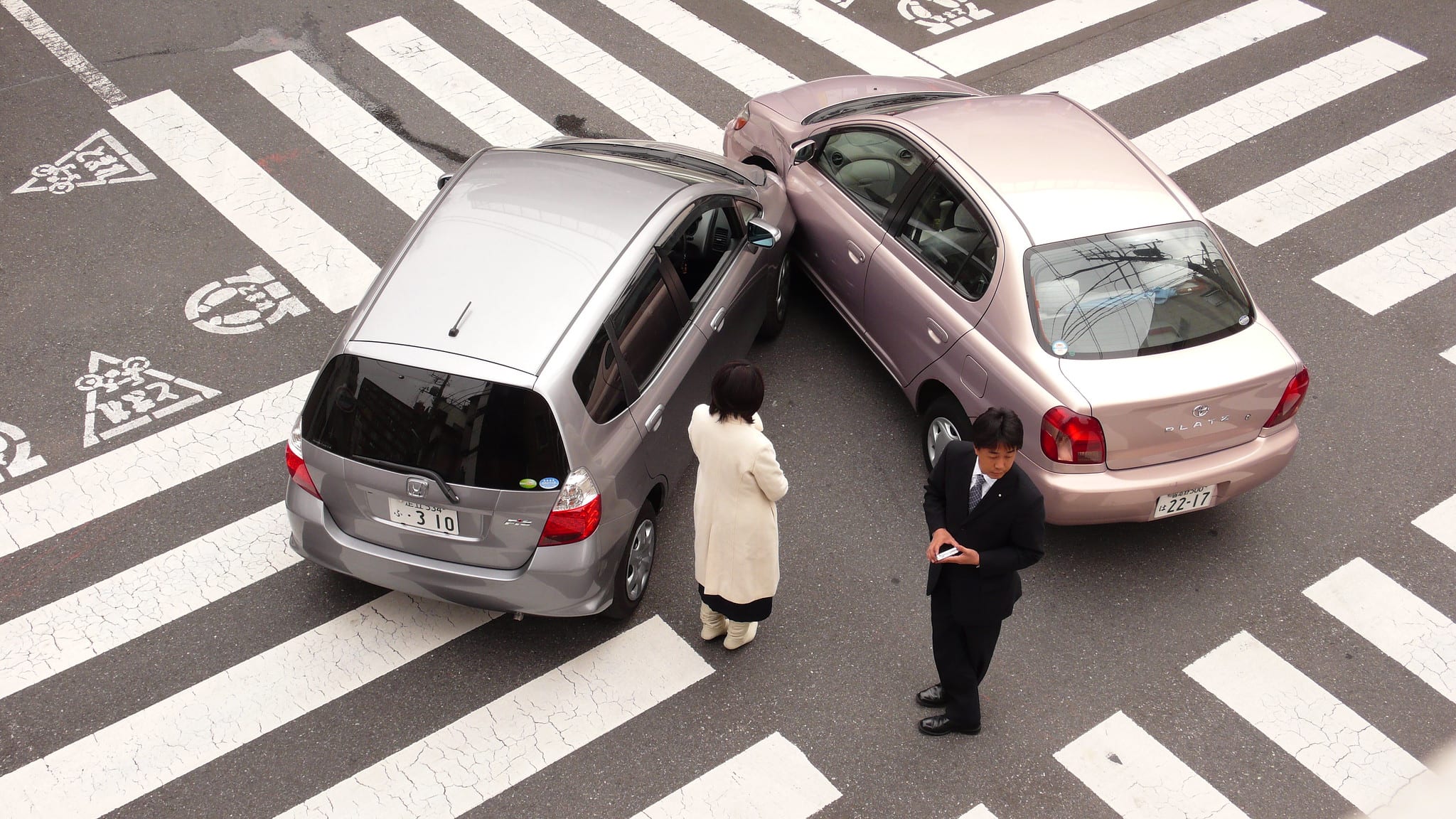Determining liability in car accidents can be tricky, especially in changing lanes incidents where it’s not always clear who has the right of way.
It’s a fact of life that accidents happen when people become distracted. Unfortunately, when vehicles are involved, even a momentary loss of concentration can lead to property damage and — worse yet — serious, or even fatal, injury. Car accidents are, by definition, sudden-impact events, and the initial reaction to these situations is invariably a sense of shock.
In the immediate aftermath of a road traffic accident, the priority must always be to determine the health and physical welfare of all involved and safely take all measures to assist.
Next comes the question, “Who’s responsible?”. In most cases where vehicles are involved in head-on or rear-end collisions, ascertaining fault is usually quite straightforward. But in an accident that happens when you or another driver is changing lanes — such as a sideswipe accident — it can be difficult to establish who caused the accident and, therefore, who’s at fault.
First Thing’s First: Call the Police
If you’re involved in even a minor car accident, you need to call the police. The attending officer will be obliged to fill out a police report of the incident, which is a vital piece of admissible evidence if you intend to claim personal injury compensation. At the very least, it is necessary for making a valid and accurate insurance claim.
The process of establishing fault will then begin, but how is liability defined?
Shared Fault and Portion of Blame
Determining fault is largely a question of negligence. If one party acted negligently, such as failing to pay attention to the road, adhere to state or federal traffic laws, or safely operate their vehicle, they could be held responsible for any accident and injuries that result.
This in itself is straightforward, but in changing lanes accidents, parties often share a portion of responsibility for the incident. If the driver of one car moves into another lane and the driver of another car fails to make space on the road, and both cars collide in a sideswipe incident, they both played a role in the accident. One driver might be at fault for making an improper lane change, while the other may be negligent for not leaving room. If neither driver is willing to admit responsibility, this can complicate the issue further.
In some cases, neither party might be at fault, such as if the accident occurred due to a mechanical issue, like a brake failure. In this case, liability lies with a third party, such as a vehicle manufacturer.
When it comes to getting compensation for injuries sustained in a changing lanes accident, liability is crucial, as it affects which party you claim from. In this scenario, it often comes down to who was the most responsible.
Improper Lane Changes
When a vehicle changes lanes improperly, it most often results in a sideswipe accident. But whatever the result of these actions, fault is determined by who has the “right of way.” This is the right of a vehicle to proceed lawfully in preference to another vehicle. The exact wording of the law differs depending on the state you’re in, but the rule itself is typically the same.
Vehicles already traveling on an open road automatically have the right of way, so they are not legally obliged to stop — or even slow down — to allow vehicles to merge onto that road. In simple terms, right of way is the right to proceed with priority, and so if a driver merges or changes lanes, they can often be deemed responsible for an accident.
The onus is on the vehicle making a lane change to ensure they can do so safely, then executing the maneuver properly. This includes giving sufficient prior warning of the maneuver by signaling and changing lanes at a safe and legal speed.
When ‘Right of Way’ Doesn’t Mean Right
Of course, there are always exceptions, and sometimes, the fault may be shared equally, or the majority apportioned to the driver with the right of way. This often happens when the driver with the right of way:

- Was driving under the influence
- Was driving over the speed limit
- Was texting while driving
- Failed to turn on their headlights
- Was driving in an intentionally reckless manner.
In these cases, even if a driver caused an accident due to an improper lane change, they would be deemed only partially at fault, and the driver with the right of way would be apportioned an appropriate percentage of the blame.
Experts Can Establish Negligence
Determining liability in car accidents can be tricky, especially in changing lanes incidents where it’s not always clear who has the right of way. If you’ve been severely injured in an accident, you may well be entitled to claim compensation from the other party. However, to do so, you must show that they were negligent.
Seeking advice from a reputable personal injury law firm is highly recommended if you believe another party was responsible for your accident. A legal expert can seek witness testimony, investigate the scene and determine the factors at play (such as intoxication, speeding, or an auto defect) to get you the compensation you deserve and allow you to focus on your recovery.


Join the conversation!